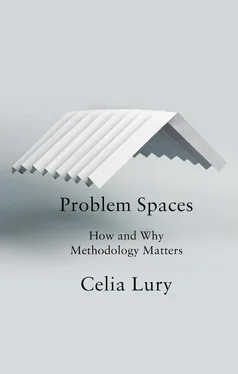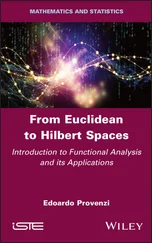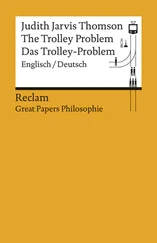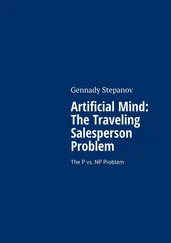To find a way to acknowledge and incorporate modification, or modulation, in the process of inquiry Dewey identifies specific roles for facts and ideas as described above. To be able to exploit the transformative relation between ideas and facts, Dewey insists upon the importance of ‘formulating [facts] in propositions: that is, by means of symbols’. This is important both because unless they are so represented they will ‘relapse into the total qualitative situation’ and because, if facts are not ‘carried and treated by means of symbols’, they lose their provisional character, and in losing this character they are categorically asserted and ‘inquiry comes to an end’. In other words, symbolic logic – what might also be called conceptualization – plays a vital role in Dewey’s formulation of the process of inquiry, since it is what enables the researcher to identify and exploit the temporalities of possibility in a given situation in practice:
Experimental operations change existing conditions. Reasoning, as such, can provide means for effecting the change of conditions but by itself cannot effect it. Only execution of existential operations directed by an idea in which ratiocination terminates can bring about the re-ordering of environing conditions required to produce a settled and unified situation. (1938: 118)
Simon’s concern with temporality is different to that of Dewey. What is fundamental to Simon’s understanding and to his adoption of the term ‘design’ is the notion of artificiality. Phenomena are artificial for Simon if, ‘they are as they are only because of a system’s being molded, by goals or purposes, to the environment in which they live’ (1996: xix). Simon continues: ‘If natural phenomena have an air of ‘necessity’ about them in their subservience to natural law, artificial phenomena have an air of ‘contingency’ in their malleability by environment’ (1996: xi). A variety of points might be made about this distinction between natural and artificial phenomena, one of the most important of which returns us to the criticism previously noted concerning the tendency towards instrumentalism in Simon’s approach. 5He himself notes a concern as to whether artificial phenomena could or should be the subject of science, given their goal-directed nature and the consequent difficulty of disentangling description from prescription, what is from what could or should be. However, he says that this is not the ‘real difficulty’: what concerns him instead is how empirical propositions can be made at all about systems that, given different circumstances, might be quite other than they are. In other words, it is not so much the moral or normative aspects of sciences of the artificial that preoccupy Simon, but the problem their contingency – the unavoidable possibility of their being otherwise – poses for reason.
In different ways then, temporality is fundamental to both Dewey and Simon’s acknowledgement that a problem (space) can always be other than it is. And as is true for Dewey, symbolic logic is important for Simon in this respect. He too stresses that the emphasis on the symbolic is not to be understood as an exclusive emphasis on the virtual or ideal. Thus, he says that symbol systems need to be ‘physical’; that is, they ‘must have windows on the world and hands too’. The computer, for example:
… must have means for acquiring information from the external environment that can be encoded into internal symbols, as well as means for producing symbols that initiate action upon the environment. Thus it must use symbols to designate objects and relations and actions in the world external to the system. (1996: 22)
In short, both Dewey and Simon signal the importance of the temporality of the composition of a problem space by emphasizing the dynamism of iterative relations between symbolic representation and action or methodologically informed intervention in the (material semiotic) composition of problem spaces. The importance of this concern for compositional methodology is taken up below in the discussion of the formal properties of circulation and in later chapters in a consideration of recursion.
However, while both writers emphasize the symbolic, they have very different understandings of its relevance, with Dewey emphasizing the metaphorical potential of symbols for theory and concept formation, and Simon focusing on symbolic logic, based on abstract formulas, which he seems to see as somehow transparent to thought in ways that bypass the ambiguities of (the metaphorical dimensions of) language. While neither is especially concerned with the variety of registers and modes of signification involved in the making of problem spaces, Chapter 2will suggest transformations in the material semiotic modalities of epistemic infrastructures is one of the things that is changing the possibility of composing problem spaces.
A second important aspect of inquiry that both Dewey and Simon address is the role of cognition. In each case, the understanding of cognition put forward is not restricted to the thinking of an isolated human subject but is, rather, linked to the situated nature of a problem, or the (changing) relation of a (changing) problem to a (changing) context, system or environment.
Dewey argues that there is ‘nothing intellectual or cognitive’ in the existence of indeterminate situations: although they are the necessary condition of cognitive operations or inquiry ‘in themselves they are precognitive’. Despite this statement (which might seem to presume that cognition is only to be found in the human subject), the issue of how the distinction between cognitive and pre-cognitive is related to indeterminate situations is a little more complicated in pragmatist philosophy than it may first appear. As Rabinow remarks:
Neither the primary locus nor the yardstick of [the practice of inquiry] are to be found in the subject. Dewey makes this point through a striking, if ambiguous, formulation: “It is the needs of a situation which are determinative” (1916: 70). We can gloss his claim by saying that thinking is a temporally un-folding, situated practice, the function of which is to clarify and to realign a problematic situation. The site of the trouble and the resolution is the problematic situation. Intervention is judged successful when it yields a reconstructive change through meeting the needs of a situation. (Rabinow 2009: 16–17)
In this way of thinking, a context or environment is not necessarily without cognition itself: indeed, for some pragmatists, the activity of selection can be exercised by a context or environment. Charles Cooley, for example, proposes that in technological societies environments are increasingly organized by communication and information technologies, which extend the environment of a phenomenon across sites, conferring on environments a ‘one-among-many’ mode of existence. He notes that communications technology ‘permits [the social actor] to form his own environment by retaining what suits him from a variety of material’ (Cooley 1897; see Lury and Marres 2015). Indeed, he further says that the selection mechanisms that structure experience may be located beyond the individual and operate infrastructurally. On the one hand, ‘the man of today [is] less dependent on the environments that happen to be nearest him’; on the other, ‘a million environments solicit him’ (Cooley 1897: 23): in short, mechanisms of selections are equally operative within the environment. For a compositional methodology, the organization of relations between a problem and environment in the composition of a problem is not understood as the choice of researchers alone, but may also be informed by the environment. Mechanisms of selection demarcate an environment of experience and a situation, an ‘environmental occasion’ as it were, both with-in and out-with which a problem may be variously re-presented or transformed.
Читать дальше











